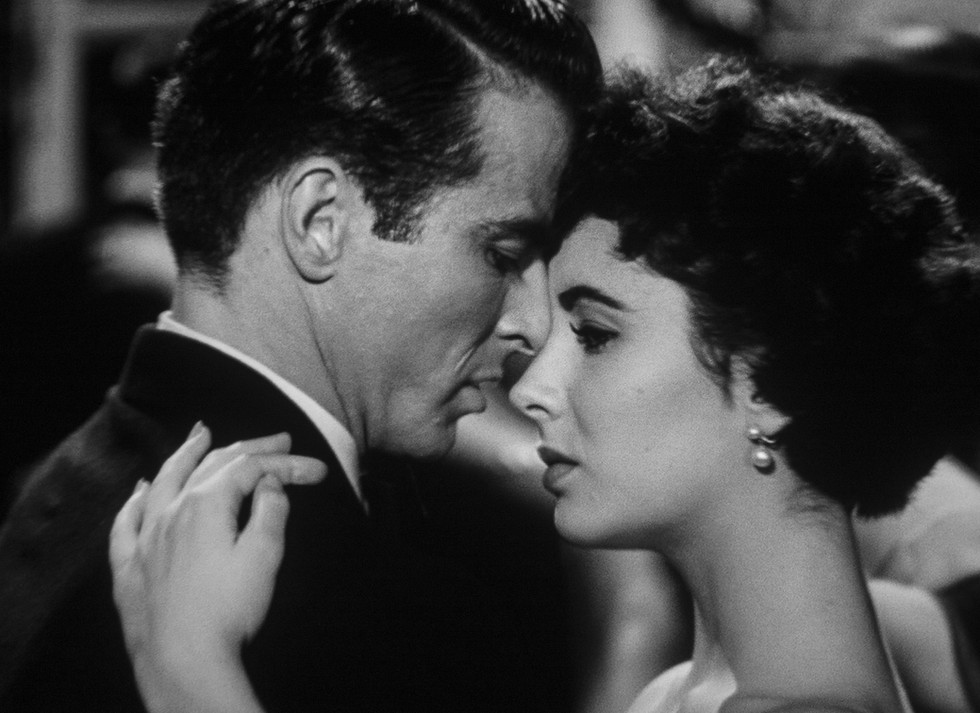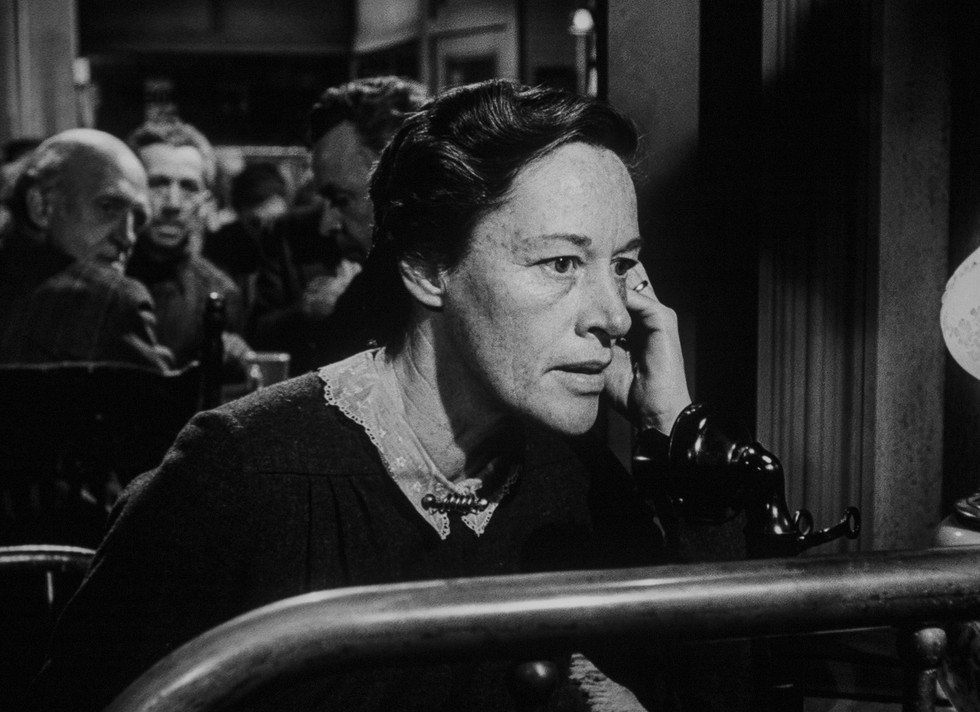“A Place in The Sun” shines on Paramount Presents Blu-ray
- Peggy Earle

- Aug 22, 2021
- 5 min read
Updated: Jun 24, 2022
BLU-RAY REVIEW / FRAME SHOTS
Montgomery Clift stars as George Eastman, nephew of Charles Eastman president of a swimsuit company. And, Elizabeth Taylor as debutante Angela Vickers.
(Click on an image to scroll through the larger versions)
PARAMOUNT PRESENTS: “A PLACE IN THE SUN”
Blu-ray and digital copy; 1951, unrated
Best extra: “George Stevens and his Place in the Sun” documentary
WHEN I think about the best movie kisses, a few immediately come to mind: Deborah Kerr and Burt Lancaster in “From Here to Eternity”; Gregory Peck and Ava Gardner in “On the Beach”; and Audrey Hepburn and George Peppard in “Breakfast at Tiffany’s.”
But what leaves them all in the dust is one that came out a few years before. It’s the moment, shot in extreme close-up, after the gorgeous Elizabeth Taylor purrs, “Tell Mama. Tell Mama all,” to the gorgeous Montgomery Clift. Their ensuing passionate kiss is actually hidden by Clift’s shoulder, but the impact is earth-shaking nonetheless.
Based on a play adapted from Theodore Dreiser’s 1925 novel “An American Tragedy” which, itself, was based on a true crime story, George Stevens’ “A Place in the Sun” is deservedly considered one of the great classics of cinematic drama. Although there was an earlier movie of it directed by Josef von Sternberg, Stevens’ iteration is the one that garnered six Oscars and many more nominations.
(1) “A Place in the Sun” premiered in Los Angeles on August 15, 1951, and was based on the 1925 novel “An American Tragedy” by Theodore Dreiser. (2-4) George hitchhikes from Chicago to an unnamed California town where his uncle’s factory is located. (5) Uncle Charles is not in the office, but George talks to him on the phone and sits at his desk and dreams.
The story centers on George Eastman (Clift), a polite young man who was raised by poor street evangelists, but who has some wealthy relatives. When George’s Uncle Charles (Herbert Heyes) offers him a chance to work in his swimsuit factory, George is given a menial position packing boxes in the plant’s basement. There, despite company rules forbidding fraternization, he finds companionship and romance with a rather plain and insecure young co-worker named Alice Tripp (Shelley Winters). But George’s hard work and ambition come to Uncle Charles’ attention, and he gets a promotion, as well as an invitation to an Eastman party. That’s where he meets the dazzling Angela Vickers (Taylor), a well-heeled beauty who, for George, represents everything he ever wanted but never dreamed he could have. Angela is equally drawn to the handsome young man, and the fatal triangle is completed – further complicated by Alice’s pregnancy and insistence that George marry her.
The “American tragedy” of the original story’s title occurs later, resulting in a murder trial that involves Raymond Burr (“Rear Window,” “Perry Mason” TV series) as a fierce prosecuting attorney.
VIDEO/AUDIO
This Paramount Presents Blu-ray celebrates the film’s 70th anniversary and was remastered from a 4K transfer (1.37:1 aspect ratio) from the original 35mm film elements. The result is very good with natural film grain, fine detail in the many tight shots, and sharp contrast throughout, even in the night and indoor scenes.
The six-channel DTS-HD soundtrack is also quite satisfying – even though the original mono track was not included. The dialogue is always clear and Franz Waxman’s Oscar-winning score and sound effects are balanced well.
(1&2) George has been invited to his uncle’s mansion and tells him and his wife Louise, daughter Marsha and son Earl that he quit his job in Chicago, with the promise that his uncle could find him a position in the factory. (3) “I think we can work something out,” says Uncle Charles (Herbert Heyes). (4) George sets his eyes on gorgeous Angela Vickers for the first time.
EXTRAS
The bonus features on the disc are excellent, and include a commentary by George Stevens Jr. and screenwriter/producer Ivan Moffat; a recent featurette with film critic/historian Leonard Maltin; an enjoyable piece containing interviews with several filmmakers who knew and reminisce about Stevens; and the 2001 documentary, “George Stevens and His Place in the Sun.”
Stevens Jr. hosts and begins with his father’s biography. The son of actor parents, Stevens began his film career as a cinematographer and gag-writer for almost all Laurel and Hardy’s comedies. When he was 36, Stevens saw the Nazi propaganda film, “Triumph of the Will,” which motivated him to join the army. He was sent overseas and put in charge of a documentary crew that included other moviemakers and writers such as William Saroyan, Irwin Shaw, and Ivan Moffat. Moffat, who died in 2002, talks about his wartime work with Stevens, including the horror of being the first to record the liberation of the Dachau concentration camp.
When Stevens returned to Hollywood, notes Moffat, he made “different kinds of films:” “Shane,” “The Diary of Anne Frank” and “A Place in the Sun,” which entailed suing Paramount Studios to let him do it. Moffat says he and Stevens read the novel and updated the story to a “post-war sensibility … when the strata of society were less defined.”
Montgomery Clift was 29 when Stevens cast him, and Elizabeth Taylor only 17. She recalls how “terrified” she was to meet Clift, who gave her her first screen kiss, and says that before then, her only leading men were “dogs and horses.” She says she “began to take acting seriously” after the film. Shelley Winters describes how she convinced Stevens to cast her as the dowdy Alice, by playing down her looks since, before then, she’d been considered a glamour girl.
Stevens Jr. comments on innovations in the visual effects, such as overlapping dissolves used to contrast the lives of Alice and Angela. He remembers riding home with his parents from the Oscar ceremony, with his father’s “Best Director” statue in the car. Stevens told his son, “We’ll have a better idea of what kind of picture this is in about 25 years.”
Seventy years later, there’s no doubt “A Place in the Sun” deserves its place among the greats.
— Peggy Earle
(1) Against company policy George starts a relationship with co-worker Alice Tripp (Shelley Winters). They both work on the assembly line. (2) Uncle Charles spots George and offers him a new position and invites him to another party. (3) George and Angela strike up a conversation in the billiard room. His uncle walks in and offers to call his mother long distance, so George can tell her about his promotion. (4) Anne Revere plays George’s mother Hannah Eastman.
The passionate kiss
George and Angela confess their love.
The Double Life
(1) Alice unsuccessfully seeks an abortion from a local doctor. (2) George spends time with Angela at her family’s summer home near a lake. (3) He impresses Angela’s skeptical mother with his honesty and intentions. (4) Alice interrupts his visit with the Vickers by arriving nearby and phoning a threat to barge in on them. (5) George agrees to meet Alice and marry her. But since its Labor Day, he suggests they rent a boat on the lake, so he can proceed with his desperate plan. (6) George cautions her to sit back down, as she continues to approach him. (7) Alice becomes distraught and stands up in the boat.
(1) District Attorney R. Frank Marlowe (Raymond Burr) and police detectives question George along a trail. “Take him back to Warsaw, boys, and lock him up,” says Marlowe. (2&3) George Eastman is charged with first-degree murder and gives his story from the witness stand about what happened to Alice Tripp after the boat capsized. (4&5) Marlowe doesn’t believe Eastman. “You pushed that poor girl into the lake. You watched her drown.” (6) George stands during the reading of the verdict.

































































Comments